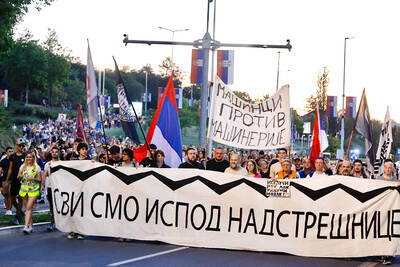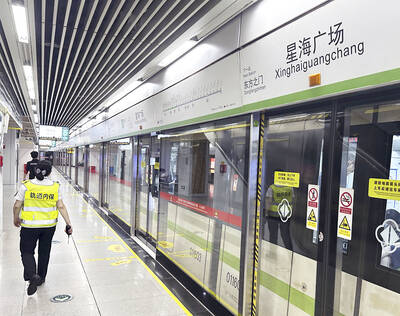Bloodied and battered, the wounded arrive daily at the emergency room here, the casualties of weeks of protests against gun-toting Indian police and security forces that spill even into the hospital corridors.
On a day late last month, three patients — Habibullah Tiploo; his teenage daughter, Sumaira; and his daughter-in-law, Fatima — were the first to arrive. The family says Tiploo was shot by security forces outside his home; as Fatima and Sumaira, 17, rushed to his aid, they were fired upon, too.
According to a police statement, protesters were lobbing stones at a nearby bunker and the three Tiploos were wounded when the police retaliated with bullets. The family denies being part of any protest.
Protesters swarmed into the emergency room with them, struggling with doctors in surgical aprons and masks to force their way into the operating room. Some slipped past, took over Fatima’s hospital bed and wheeled it to the X-ray room as they chanted the same slogans that have filled the streets, angry words echoing off the walls and drowning out the wails of grieving friends and relatives.
“The Kashmir which we have irrigated with our blood — that Kashmir is ours!” they chanted.
The melee was common enough at the hospital, the Sher-i-Kashmir Institute of Medical Sciences, where more than 500 patients have come in with bullet wounds, lacerations and bruises in the past three months.
They are often carried by scores of protesters, who take the turmoil of the streets into the hospital with them, making the emergency room a miniature of Kashmir’s conflict and a window on the ways it has overturned the lives of just about every Kashmiri, irrespective of class or professional status.
The staff members at the Srinagar hospital have been dealing with such scenes on a regular basis since June 11, when thousands of demonstrators took to the streets to protest the death of Tufail Mattoo, a teenager who was hit by a tear gas canister.
The mass protests and subsequent response by security forces have left 65 civilians dead and countless injured, a casualty toll that has escalated in the past month. Last month alone, the hospital staff here received 345 patients as a result of the conflict, compared with roughly 150 during June and July combined.
The city is subjected to nearly continuous strikes by protesters agitating for independence for Kashmir, the prize of a tug of war between India and Pakistan, which have each held a part of the territory since their partition more than 60 years ago. The curfews called by the government to quell the demonstrations have effectively shut the city down.
For the hospital staff, the journey to work is a daily exercise in resourcefulness and courage. While the rest of the city sleeps, holes up in houses and stays away from windows that tend to be the targets of stones from protesters, the doctors and paramedical staffs of the Kashmir Valley’s hospitals must still report for duty.
Many doctors, who brave the gantlet either in their own cars or in hospital ambulances that serve as stealth commuter buses, complained of being caught in protesting mobs almost daily.
Some said they were not allowed to pass by protesters or security forces, even if they arrived in an ambulance, which the police had indicated should have kept them safe. The local news media have reported that some doctors on their way to work have been brutalized by police and security forces, or arrested.
Representatives for the police and other security forces deny ever obstructing any doctor or hospital staff member from arriving at work.
Shahida Mir, the principal of the Government Medical College in Srinagar and head of five associated hospitals, placed one of them, known as SMHS Hospital, under a state of emergency during the first week of last month, meaning it would perform only emergency surgery because of the influx of trauma patients. She, too, complained that her doctors were delayed, harassed or turned back by security forces when trying to get to work.
“They put up such a stern face, the doctors get scared,” she said of the security forces, which still number in the hundreds of thousands in Kashmir after many arrived in the 1990s to fight an insurgency that has since been mostly vanquished.
Farooq Ganie, a surgical resident, confessed that for the past two-and-a-half months, he had resided on campus at the institute, too afraid even to try the commute home. On a recent Saturday, he dared try it.
“They stopped me, and I showed them my ID card,” he said of the security forces. “I was so scared, I thought they would beat me, but they let me go.”
Abdul Maajid, a psychiatrist who witnessed the protests in the emergency room, explained that the younger generation of Kashmiris, those responsible for many of the protests, are the products of an environment with “acute chronic stressors.”
“They have not seen normal life,” he said.
His own upbringing in the valley, before the insurgency of the 1990s, was relatively peaceful.
“I have seen what normal life means,” he said. “For the last 20 years, I have seen the kids around. They have not seen the playground. They have not seen the normal recreational activities you expect them to do at their age.”
In recent days, the situation at the hospitals has grown less urgent as the administration has adapted to the conditions, and casualty numbers dwindle, but tensions remain and the effects of the curfews have deepened.
Pharmacies are running low on many routine medications because of a transportation shutdown in the valley, according to residents. Many family members of hospital patients whose homes lie outside Srinagar are having trouble getting food, and are being helped by local people who have donated and organized meals for the month of Ramadan.
Then there is the fear shared by so many Kashmiris, but one that particularly affects the hospital’s nurses, who are not allowed to live on campus and must brave the commute daily.
“It’s terrible to come here,” said Shazia Mohi-u-Din, a nurse. “It is stressful every day. When you leave the house, you don’t know if you’re coming back.”

Eleven people, including a former minister, were arrested in Serbia on Friday over a train station disaster in which 16 people died. The concrete canopy of the newly renovated station in the northern city of Novi Sad collapsed on Nov. 1, 2024 in a disaster widely blamed on corruption and poor oversight. It sparked a wave of student-led protests and led to the resignation of then-Serbian prime minister Milos Vucevic and the fall of his government. The public prosecutor’s office in Novi Sad opened an investigation into the accident and deaths. In February, the public prosecutor’s office for organized crime opened another probe into

RISING RACISM: A Japanese group called on China to assure safety in the country, while the Chinese embassy in Tokyo urged action against a ‘surge in xenophobia’ A Japanese woman living in China was attacked and injured by a man in a subway station in Suzhou, China, Japanese media said, hours after two Chinese men were seriously injured in violence in Tokyo. The attacks on Thursday raised concern about xenophobic sentiment in China and Japan that have been blamed for assaults in both countries. It was the third attack involving Japanese living in China since last year. In the two previous cases in China, Chinese authorities have insisted they were isolated incidents. Japanese broadcaster NHK did not identify the woman injured in Suzhou by name, but, citing the Japanese

YELLOW SHIRTS: Many protesters were associated with pro-royalist groups that had previously supported the ouster of Paetongtarn’s father, Thaksin, in 2006 Protesters rallied on Saturday in the Thai capital to demand the resignation of court-suspended Thai Prime Minister Paetongtarn Shinawatra and in support of the armed forces following a violent border dispute with Cambodia that killed more than three dozen people and displaced more than 260,000. Gathered at Bangkok’s Victory Monument despite soaring temperatures, many sang patriotic songs and listened to speeches denouncing Paetongtarn and her father, former Thai prime minister Thaksin Shinawatra, and voiced their backing of the country’s army, which has always retained substantial power in the Southeast Asian country. Police said there were about 2,000 protesters by mid-afternoon, although

MOGAMI-CLASS FRIGATES: The deal is a ‘big step toward elevating national security cooperation with Australia, which is our special strategic partner,’ a Japanese official said Australia is to upgrade its navy with 11 Mogami-class frigates built by Japan’s Mitsubishi Heavy Industries, Australian Minister for Defence Richard Marles said yesterday. Billed as Japan’s biggest defense export deal since World War II, Australia is to pay US$6 billion over the next 10 years to acquire the fleet of stealth frigates. Australia is in the midst of a major military restructure, bolstering its navy with long-range firepower in an effort to deter China. It is striving to expand its fleet of major warships from 11 to 26 over the next decade. “This is clearly the biggest defense-industry agreement that has ever